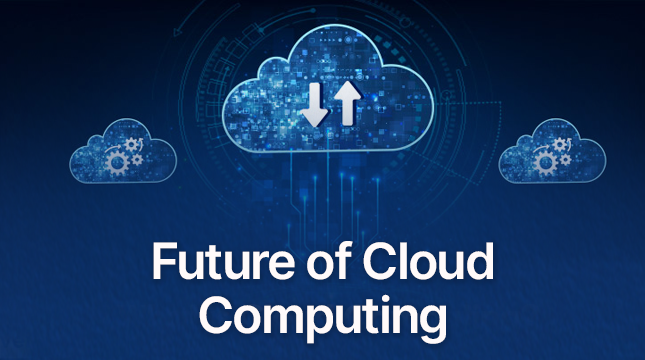This website uses cookies so that we can provide you with the best user experience possible. Cookie information is stored in your browser and performs functions such as recognising you when you return to our website and helping our team to understand which sections of the website you find most interesting and useful.
The Future of Cloud Computing: Emerging Trends and Innovations

Cloud computing has transformed the way businesses operate by providing scalable infrastructure, cost-effective solutions, and flexibility that meets today’s fast-changing demands. As technology evolves, so does the cloud computing landscape. Here’s a look at the major trends driving the future of cloud computing:
1. Hybrid Cloud Adoption
-
- Combining Public and Private Clouds
Hybrid cloud models allow companies to take advantage of both public and private cloud environments. This means organizations can use the public cloud for general tasks while keeping sensitive data on private, more secure servers. This approach offers flexibility in managing resources and data. - Increased Flexibility and Scalability
Hybrid clouds provide the best of both worlds by enabling businesses to scale up when needed while still controlling crucial data. It’s an efficient way to handle dynamic business needs without compromising security.
- Combining Public and Private Clouds
2. Edge Computing
-
- Processing Data Closer to the Source
Edge computing brings the processing power closer to where the data is generated, such as IoT (Internet of Things) devices and real-time applications. This reduces delays in data transfer (latency) and speeds up response times, making it highly beneficial for industries like healthcare, smart cities, and autonomous vehicles. - Enhanced Performance and Efficiency
By reducing the need to send large amounts of data to the cloud for processing, edge computing improves efficiency and can dramatically enhance performance for real-time services and applications.
- Processing Data Closer to the Source
3. Serverless Computing
-
- Pay-Per-Use Model
Serverless computing lets developers focus on writing code without needing to worry about managing servers or infrastructure. In this model, organizations only pay for the computing power they actually use, which can reduce costs, especially for fluctuating workloads. - Increased Scalability and Cost-Efficiency
With serverless computing, resources automatically adjust based on the demand, allowing companies to efficiently scale their applications without overspending on unused resources.
- Pay-Per-Use Model
4. Artificial Intelligence (AI) and Machine Learning (ML) in the Cloud
-
- Enhanced Data Analytics
Cloud computing enables AI and ML to process and analyze vast amounts of data, providing deeper insights into consumer behavior, operational efficiency, and more. This can lead to better business outcomes and smarter decision-making. - Improved Decision-Making
AI and ML automate routine tasks, predict trends, and identify patterns in data, helping businesses improve decision-making processes. These technologies are crucial for industries looking to innovate and stay competitive in the future.
- Enhanced Data Analytics
5. Increased Security and Compliance
-
- Robust Security Measures
As cyber threats continue to evolve, cloud providers are investing in more advanced security features, from encryption to multi-factor authentication, to protect customer data from breaches and attacks. - Compliance with Industry Regulations
Cloud providers are ensuring that their services comply with various data protection regulations, such as GDPR in Europe or HIPAA in healthcare. This focus on compliance helps businesses safely store and manage sensitive data in the cloud without worrying about violating industry standards.
- Robust Security Measures
Conclusion
As cloud computing evolves, it continues to unlock new possibilities and innovative solutions for businesses worldwide. From the rise of hybrid and edge computing to serverless architectures and AI-driven insights, the future of cloud computing promises greater efficiency, flexibility, and security. By staying informed about these trends, organizations can thrive in the cloud-first era.

Let's Start Your Project
Get free consultation for your digital product idea to turn it into reality!
Get Started






